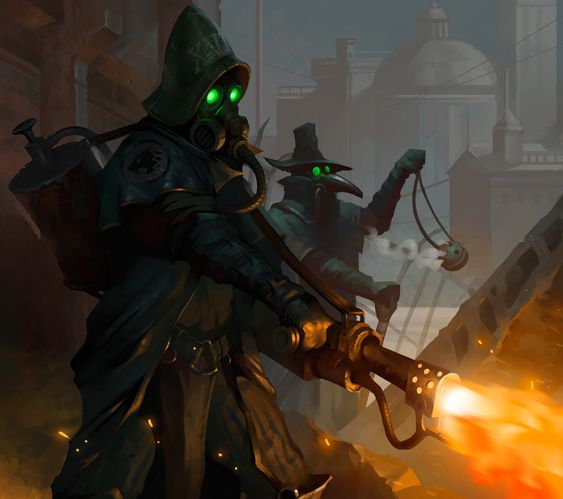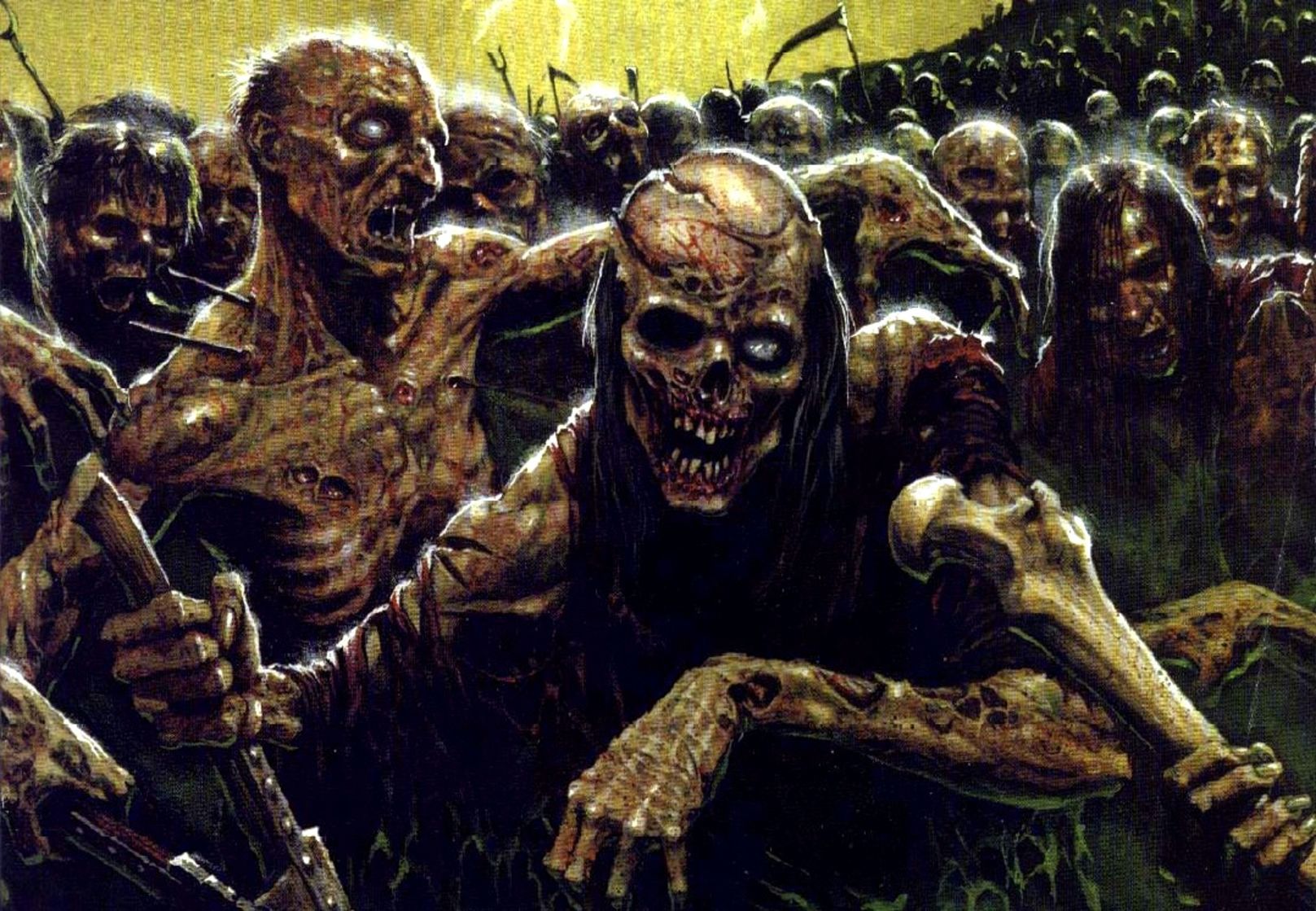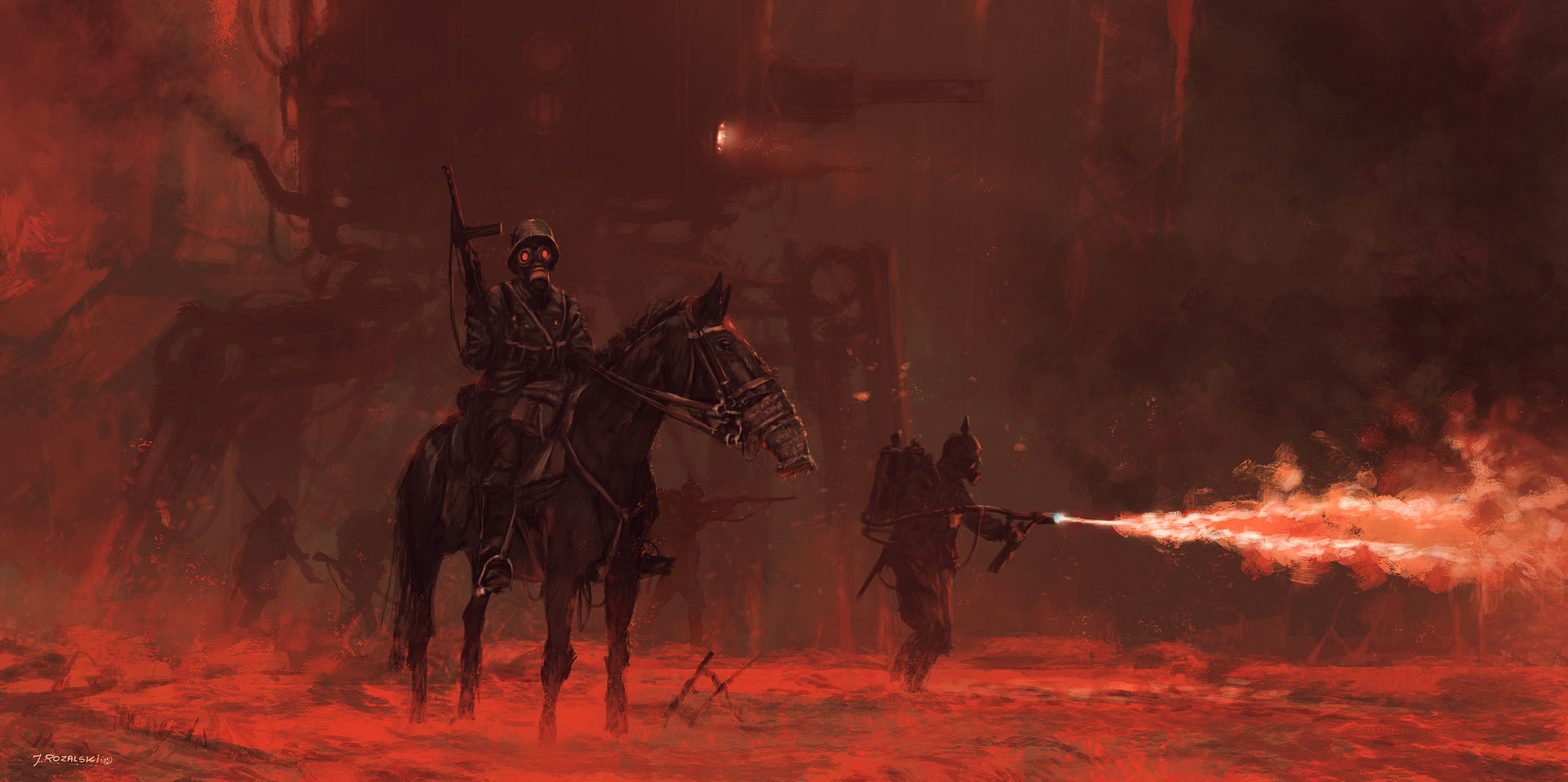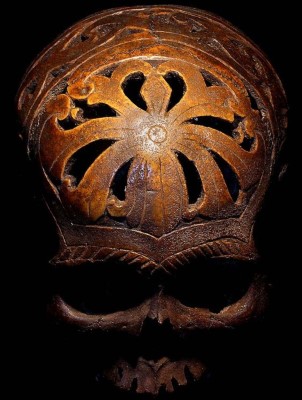The Riot of Red Rivers
No more! There are men and women here who can no longer feed their families or cloth their children! Families who have lost their loved ones and their dignity to corpse-mongers who sniff for dead bodies like maggots! We will not be forgotten. We will not be replaced.The Riot of Red Rivers was the beginning of the largest uprising in the Abhimaan Monarchy in response to the rapid introduction of industrialized Necromancy. Workers once displaced by machines now found their labor further reduced by the working dead and the situation was further exasperated by several poor harvests that saw the price of food sharply increase: not to mention that farmers affected by the droughts turned to the Undead as a cheaper form of labor in those hard times. The riot began in the industrial parts of the city of Daavesh and once the first bullet was fired it spread to the rest of the city, then the country side. It was the first time that the Undead were used to quell a riot, with predictable results.
Background
Zahri Talaq Before his name became another word for traitor, Zahri Talaq was a minor criminal who ran his own little empire. Despite his wealth and success, often employed as a strike-breaker and a frequent parasite on various unions, Zahri Talaq craved recognition and legitimacy more than anything. He saw the unrest as his ticket to that - and perhaps even to political power. The results would be catastrophic for the protesters
Gathering Storm
The entire city is on edge. We all know what's going to happen, but there doesn't seem to be any way to stop it.Zahri Talaq had managed to insert himself into the conversation by using his goons and criminal connections. Once there, he begun agitating the gathered masses with far more extreme language than the organizers had initially planned for. The mood, however, was already sour. Food shortages and smaller riots had already broken out in cities near to Daavesh and it didn't take more than a spark to light the fire. Despite some early looting and some clashes with police, there were no significant incidents of violence from either side. Trouble began when protester burned down a factory full of the Undead and begun to surge towards another. The owner of the factories had panicked and mercenary guards opened fire on the protesters. Even as the crowd quickly dispersed to avoid the gunfire, they became rioters as soon as the first body hit the ground.
Due to the conflagration that followed and the chaotic circumstance, it is difficult to track the movement of all the parties here. We do know who owned the factory which lead to the first fatal clash and we do know that Zahri Talaq by large never went anywhere near the danger, whipping the protesters on from far behind.In less than two weeks, the protest had become a riot with wide-spread looting and destruction. Dissenters and more militant unionists had become to smuggle men and weapons into the city while the police response was focused on attempting to contain the growing number of rioters. The stage was set for the Riot to enter its first stage.
The Fall of Daavesh
We're still not sure why it took so long for a state of emergency to be called. The leading theory suggests that Mayor Yushan severely underestimated the determination and anger of the rioters, believing the whole thing would "blow over in a matter of days".Even if the rioters splintered in their organization, the police had at this point been overwhelmed. Many had been killed and others captured by the rioters. Any undead caught within the city was made sport of as the rioters vented all their angers and frustrations on the most obvious symbol of their trouble. Some police even joined the rioters side and soon, they controlled the city.
Abhimaan Responds
If the protesters believed their show of strength would cow the crown of Abhimaan to acquiesce to their demands, they were sadly mistaken.In response to the fall of Daavesh, the Abhimaan royals called upon one of their most capable and feared generals: Memori Daqy, sometimes called the lord of the dead. While not a Nekrobiotek himself, General Daqy has a sizable contingency of them at his disposal. As his forces were mustering, Daqy hunted down the rioters who had spread outside of the city itself both as a measure to quell to spread of the revolt and the bolster his ranks with fresh Undead. Inside Daavesh, the rioters were still celebrating their success and some of those celebrations turned bloody and violent. There were soon no Undead left in the city and the rioters had press-ganged much of the population to help them, bolstered by the armories seized from police and riot-control forces.
While Memori Daqy's name has become tangled into the story for the Riot, it is important to remember what his role was before and after that. The general was no stranger to bloody battles at this point in his career and was already known for his innovative tactics involving the Undead. To those who know of him, his approach in the riot should come as no surprise.However, once the country side had been made calm, the noose began to tighten around the city.
The Rivers Run
Some of the rioters hade made attempts to fortify their positions and prepare for what they saw as an inevitable response from the Royals, but I don't think anyone of them were prepared for what they saw.Daqy's forces did not enter the city at first but encircled the city. Any pretense of restraint was quickly shattered by the sound of artillery fire, however. General Daqy's initial attacks were not aimed to penetrate the city's defenses, but to probe. The slain from either side were returned to his Nekrobiotek and reanimated. After a week of his arrival, General Daqy set his plan in motion. The Undead had been used in battle before, but never had they been set upon an civilian populace like this and never in this number. General Daqy also had an unexpected ally: Zahri Talaq. The crime-boss turned riot organizer attempted to buy his freedom through intermediaries, telling the general all that he needed to know for his final assault on the city.
The exact events are still redacted and not accessible for anyone outside of the military or royal family. What we do know is that General Daqy relied heavily on his undead troops and terror tactics. He would advance a short distance, recover the bodies of rioters slain and makes those undead advance first in the next assault. The tactic proved very effective. Seeing their slain comrades now attack them, sometimes with no more armament than a shovel or their teeth was terrifying for the untrained rioters and many dropped their weapons to flee. Much of the ancient city was lost and it is difficult to determine exactly whose fault it is. It's certainly true that Daqy did not shy away from using his heavy guns when resistance proved particularly stubborn, however. At the end of the week, General Daqy had retaken the city. Most of his losses were from the Undead. The rioters were not so fortunate and suffered heavy casualties. Of those who survived, most were sent to distant labor camps and forgotten while the ring-leaders were executed as a warning to others. While the unrest continued across the Empire for many years still, the fate of Daavesh was a signal to any other rebels about the consequences.
Zahri Talaq disappeared immediately after. While his fate is never officially recorded, confidential sources tell me that General Daqy was not fond of his treachery. Given General Daqy's fondness for solving his problem with the use of Undead, his fate is perhaps better off unknown.
Belligerents
The Rioters
Abhimaan Monarchy
Strength
A few thousand protesters, ten thousand rebels
2000 Peacekeepers, 75 Nekrobiotek and 10,000 Undead
Casualties
Horrendous
Moderate.
Objectives
Force demands to limit Industrial Necromancy and ensure labor
To crush the riot, dismantle the unions and bring order back to the city of Daavesh.






Comments